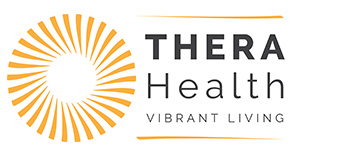Highlights
- There are two main sources of omega-3s: plant-based sources in the ALA form, and marine sources that provide EPA and DHA directly.
- The conversion of ALA to EPA and DHA is extremely low in humans.
When Cells Are Healthy, Your Body Can Function At Its Best
The human body is made up of trillions of cells which form the tissues, organs, and organ systems our bodies need to function. Omega-3s, particularly eicosapentaenoic acid (EPA) and docosahexaenoic acid (DHA), provide foundational support for these cells. Following consumption, the majority of omega-3s reside in our cell membranes, which act as the gatekeepers to our cells. EPA and DHA help promote the fluidity of cell membranes, which enables cells to be responsive to their environment (1). When your cells respond to their environment optimally, then your body can function at its best.
Along with benefits for cellular health, research finds that the omega-3s EPA and DHA can help maintain a healthy inflammatory response, and provide foundational support for heart, immune, brain, mental, prenatal, and neonatal health.
The Issue Of Omega-3 Deficiency
A substantial amount of research links omega-3 deficiency to a prolonged inflammatory response, which can lead to a host of suboptimal health outcomes (2,3). Despite this growing evidence, up to 80% of Australians are deficient in omega-3s, making it one of the top nutrient deficiencies in the Australia (4).
 Two of the main reasons for Australias’ startling omega-3 deficiency include:
Two of the main reasons for Australias’ startling omega-3 deficiency include:
- Inadequate consumption of direct sources of EPA and DHA.
- Regular consumption of a Western diet characterized by a low intake of seafood, and a high intake of omega-6-rich foods.
Not All Omega-3s Are Created Equal
There are two main sources of omega-3s: marine-based and plant-based. Marine sources include cold-water fatty fish (e.g., anchovies, sardines, salmon, mackerel) which provide omega-3s directly in the form of EPA and DHA.
Plant-based sources such as flaxseeds, chia seeds, hemp, and walnuts, contain omega-3s in the form of alpha-linolenic acid (ALA). ALA must be converted by the body into EPA and DHA through a complex series of metabolic reactions.
The Human Body Is Extremely Limited In Its Ability To Convert ALA To EPA And DHA
The conversion rate of ALA to EPA and DHA is extremely low—5% for EPA and 0.5% for DHA (5). A number of factors contribute to ALA’s low conversion rate:
- A high intake of omega-6 fatty acids relative to omega-3s creates competition for enzymes needed to convert ALA into EPA, specifically delta-6-desaturase (D6D) (3, 6).
- If an individual is deficient in vitamins and minerals that act as cofactors for D6D (such as B6 and zinc), this can also inhibit the conversion of ALA into EPA (7, 8).
- In addition, approximately 25% of the population has a genetic variant that reduces the activity of D6D, which in turn reduces the synthesis of EPA and DHA (9).
- On top of all of these factors, premature infants, hypertensive adults, and some diabetics are even more limited in their ability to make EPA and DHA from ALA (6).
Let’s put this into perspective, shall we? In order to obtain 1,000 mg of EPA and DHA, you would need to consume about 10 ounces (a little over half a pound!) of flax or chia seeds—a hard task to meet on a daily basis. While flax and chia seeds are healthful and provide important nutrients like fibre and magnesium, they are not efficient sources of EPA and DHA.
Dosing
Something else to keep in mind is that 1,000 mg of EPA and DHA a day may not be enough to achieve a healthy omega-3 status. This is because a number of variables factor into how well someone metabolizes dietary fatty acids, and thus the amount of omega-3s they would need to maintain normal cellular health (10, 11). As a result, the only conclusive way to ensure you are meeting your omega-3 needs is by having your omega-3 blood levels tested, and working with your doctor to find the optimal amount for your body.
References
KATE TURNER, MA, RD, CPT
NUTRITION SPECIALIST
Kate is the Nutrition Specialist at Nordic Naturals. As a Registered Dietitian and personal trainer, Kate is passionate about improving people’s health through evidence-based nutrition education and exercise. Kate has over 7 years of experience in the field of nutrition as a wellness director, private nutrition consultant, educator, and public speaker.
Related Posts
Click here to add your own text








Leave a Reply
Want to join the discussion?Feel free to contribute!